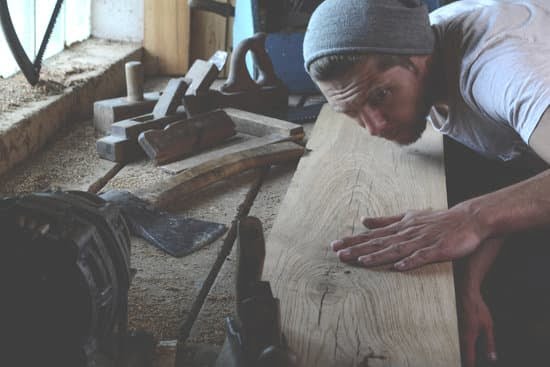Woodworking is not only a craft but also a way of life for many enthusiasts. It brings together people who share a passion for creating functional and beautiful objects from wood. If you are someone who loves woodworking and wants to create a sense of community with like-minded individuals, starting a woodworking guild may be the perfect endeavor for you.
A woodworking guild offers numerous benefits that extend beyond just honing your skills. By joining or starting a woodworking guild, you have the opportunity to learn from experienced craftsmen, share ideas and techniques, and collaborate on projects that push the boundaries of your creativity. Not only does this enhance your woodworking capabilities, but it also fosters a supportive community that encourages growth and personal development.
Starting a woodworking guild allows you to create an environment where individuals can come together to network, exchange knowledge, and inspire each other. Woodworking itself can often be solitary work, but being part of a guild breaks down those barriers by providing opportunities to connect with others who share your passion. It cultivates a strong sense of camaraderie as members work towards common goals while celebrating their individual successes along the way.
In this article, we will explore everything you need to know about starting and maintaining a thriving woodworking guild. From understanding the concept of a woodworking guild to recruiting members, establishing an organizational structure, planning workshops and events, fostering continuous learning opportunities, creating collaborative environments, and sustaining growth – we will delve into every aspect to help you embark on this rewarding journey. So let’s dive in and discover how you can start your own woodworking guild today.
Understanding the Concept of a Woodworking Guild
A woodworking guild is a community-based organization that brings together individuals with an interest in woodworking. The concept of woodworking guilds dates back to medieval times when craftsmen formed associations to protect their trade secrets and share knowledge and resources. These guilds played a significant role in promoting the advancement of woodworking skills and fostering a sense of community among woodworkers.
Woodworking guilds serve as a platform for woodworkers of all skill levels to come together, learn from one another, and share their passion for the craft. They provide opportunities for networking, collaboration, and mentorship, enabling members to enhance their skills and expand their knowledge in various aspects of woodworking.
The purpose and objectives of a woodworking guild are multi-faceted. Firstly, they aim to promote the preservation and advancement of traditional woodworking techniques. By sharing knowledge and expertise, guild members can preserve the rich history of woodworking while also exploring innovative approaches to the craft. Secondly, guilds seek to create a supportive community where woodworkers can connect with like-minded individuals who share their passion. This sense of camaraderie fosters collaboration, inspiration, and mutual growth within the woodworking community.
Understanding the Concept of a Woodworking Guild
| Key Points | Data |
|---|---|
| Definition | A community-based organization that brings together individuals with an interest in woodworking. |
| Historical Significance | Guilds originated in medieval times as associations to protect trade secrets and share knowledge. |
| Purpose/Objectives | Promote preservation & advancement of traditional techniques; foster a supportive community for woodworkers. |
Understanding the history and significance of woodworking guilds helps create a sense of continuity and pride among members. By being part of a guild, woodworkers become part of a lineage that extends back centuries. This connection to the past can inspire individuals to take their craft seriously and contribute actively to the growth of the woodworking community.
Woodworking guilds are founded on the principle of collective learning and collaboration. Members have the opportunity to learn from experienced craftsmen, receive constructive feedback on their work, and gain practical skills through workshops and demonstrations. Additionally, guilds often host guest speakers or organize field trips to enhance members’ exposure to different woodworking techniques and styles.
Setting Goals and Vision for Your Woodworking Guild
Establishing clear goals and a strong vision for your woodworking guild is essential for its success. A well-defined purpose and direction will not only guide the activities of the guild but also attract like-minded individuals who share your passion for woodworking. In this section, we will discuss the importance of defining the guild’s goals and vision, provide guidance on establishing clear objectives, and highlight the role of shared values and interests in shaping the guild’s direction.
Defining the goals and vision of your woodworking guild is crucial as it provides a roadmap for what you hope to achieve as a collective group. Whether it is to promote traditional woodworking techniques, foster creativity, or provide educational opportunities to members, having well-defined goals ensures that everyone is aligned and working towards a common purpose. It also allows for better planning and organization of activities such as workshops, events, and community outreach initiatives.
To establish clear objectives for your woodworking guild, start by brainstorming with fellow members to identify key areas of focus. Prioritize these objectives based on their importance and feasibility, considering factors such as available resources, member expertise, and community needs. It may also be helpful to define measurable outcomes or milestones that can be used to gauge progress towards achieving these objectives.
Shared values and interests play a significant role in shaping the direction of your woodworking guild. Encourage open discussions among members about their motivations for joining the guild and what they hope to gain from their participation. This will help uncover common interests that can guide decision-making processes. Additionally, consider involving members in goal-setting and visioning exercises to ensure inclusiveness and a sense of ownership among all participants.
| Benefits | Relevant Data |
|---|---|
| Guidance on establishing clear objectives | By brainstorming with fellow members and prioritizing objectives, the guild can have a roadmap for its activities. |
| Importance of shared values and interests | Encouraging open discussions can help uncover common interests and guide decision-making processes in the guild. |
| Fostering inclusiveness | Involving members in goal-setting exercises ensures a sense of ownership among participants, which fosters a collaborative environment. |
Identifying Potential Members and Recruiting
When starting a woodworking guild, one of the most important steps is identifying potential members and recruiting them to join. The success of your guild relies on building a strong community of individuals who share a passion for woodworking. Here are some strategies to help you find and attract potential members:
- Define your target audience: Before you start recruiting, it’s essential to have a clear understanding of the type of people you want to attract to your woodworking guild. Consider factors such as skill level, age group, and specific woodworking interests. Identifying your target audience will help you tailor your recruitment efforts more effectively.
- Reach out through various channels: To attract potential members, you need to promote your woodworking guild through different channels. Utilize social media platforms like Facebook and Instagram to showcase the work that is being done within the guild. Create a website or blog where interested individuals can find information about joining the guild and upcoming events. Additionally, consider attending local craft fairs or trade shows where you can meet prospective members in person.
- Highlight the benefits of joining: When recruiting members for your woodworking guild, it’s crucial to emphasize the benefits they can gain from being part of the community. Some potential benefits could include access to shared tools and equipment, workshops with skilled mentors, networking opportunities with other woodworkers, and the chance to showcase their work in exhibitions and demonstrations.
- Foster a welcoming environment: While promoting your woodworking guild is essential, creating a welcoming atmosphere is equally important. Make sure that new members feel included and valued right from the beginning by providing them with resources and guidance as they navigate their way into the guild. Encourage existing members to mentor newcomers and foster an environment where everyone feels supported.
By actively identifying potential members and implementing effective recruitment strategies, you can build a thriving woodworking guild full of passionate individuals who share a love for the craft. Remember that attracting new members is an ongoing process, so continue to engage with the woodworking community and promote the benefits of joining your guild. With time and effort, you can create a strong and vibrant community that enhances the skills and passion of all its members.
Establishing Organizational Structure and Governance
One crucial aspect of starting a woodworking guild is establishing its organizational structure and governance. This ensures that the guild operates smoothly and efficiently, with clear roles and responsibilities for its members. By creating a well-defined structure, the guild can effectively manage its activities and decision-making processes.
To begin, it is important to form a board or committee to oversee the operations of the woodworking guild. This group will serve as the guiding force behind the guild’s activities and ensure that its objectives are met. The board or committee should consist of individuals who are committed to the success of the guild and have diverse skills and expertise related to woodworking.
Each position within the organizational structure should have defined roles and responsibilities. The key positions may include a president, vice president, secretary, treasurer, and other committee members as needed. The president may be responsible for leading meetings, making executive decisions on behalf of the guild, and serving as the main point of contact for external communications.
The vice president could assist the president in their duties and step in when necessary. The secretary would handle administrative tasks such as record-keeping, managing correspondence, and organizing meetings. The treasurer would manage the finances of the guild, maintain accurate financial records, and provide regular reports on income and expenses.
In addition to forming an organizational structure, it is essential to create effective bylaws and governing documents for your woodworking guild. These documents outline how decisions will be made within the organization, how conflicts will be resolved, membership requirements, expected conduct of members, protocols for electing new leaders or making changes to existing leadership positions, among other important aspects. By establishing clear guidelines through governing documents early on, you can prevent confusion or disputes down the line.
Planning and Organizing Woodworking Workshops and Events
Woodworking workshops and events are integral to the success of a woodworking guild. These activities provide opportunities for members to enhance their skills, learn from experts, and connect with fellow woodworkers. Planning and organizing these events requires careful consideration to ensure they are successful and beneficial for all participants.
Here are some tips and strategies for planning and organizing successful woodworking workshops and events:
- Define the purpose: Before planning any workshop or event, it is important to clearly define its purpose. Are you aiming to teach specific woodworking techniques, showcase member projects, or invite guest speakers? Understanding the objective will help guide your planning process.
- Determine the format: Consider the best format for your workshop or event based on its purpose. Will it be a hands-on workshop where participants can learn by doing? Or will it be a demonstration-style event where an expert showcases their skills? Tailor the format to suit the goals of the activity.
- Create a budget: Budgeting is crucial when planning woodworking workshops and events. Determine how much you can allocate for venue rental (if applicable), materials, tools, refreshments, advertising, and any other expenses. Having a clear budget will help you make informed decisions throughout the planning process.
In addition to these tips, it is important to consider different types of events that can be organized within a woodworking guild:
- Exhibitions: Organize exhibitions where members can display their completed projects. This encourages creativity among members and allows them to showcase their skills.
- Demonstrations: Invite expert woodworkers or members with specific expertise to give demonstrations on various woodworking techniques. This provides valuable learning opportunities for members.
- Guest speakers: Arrange for guest speakers, such as renowned woodworkers or industry professionals, to share their insights and experiences. This can inspire members and expose them to new ideas.
By carefully planning and organizing woodworking workshops and events, a woodworking guild can create a vibrant community of woodworkers who are constantly learning, sharing knowledge, and honing their skills.
Creating Learning Opportunities for Members
One of the key aspects of a woodworking guild is providing learning opportunities for its members. Woodworking is an art form that requires continuous skill development and knowledge enhancement. By offering programs and resources for members to learn and grow, a woodworking guild can foster a sense of community and facilitate the exchange of ideas and techniques among its members.
To create learning opportunities, woodworking guilds can organize skill development programs and workshops. These can include hands-on demonstrations by experienced woodworkers, guest speakers, or even collaborative projects where members can work together to learn new techniques. It is important to identify the specific needs and interests of the members when planning these programs, so that they are relevant and engaging.
In addition to formal programs, a woodworking guild can also provide educational resources for its members. This can include a library of books, magazines, or online resources on woodworking techniques and design inspiration. The guild can also curate a collection of instructional videos or tutorials that members can access whenever they want to learn something new or enhance their skills.
Furthermore, facilitating knowledge-sharing and mentorship within the guild is also crucial in creating learning opportunities. Encouraging experienced woodworkers to mentor beginners or organize workshops where members can share their expertise with others helps foster a supportive learning environment. Additionally, creating platforms such as online forums or social media groups where members can ask questions and seek advice from one another further enhances the collective knowledge base within the guild.
By prioritizing learning opportunities for its members, a woodworking guild not only ensures their continuous growth but also strengthens the sense of community among them. It allows woodworkers of all skill levels to come together, share their passion for woodworking, and inspire each other to reach new heights in their craft.
Establishing a Workshop Space and Collaborative Environment
The Importance of Having a Dedicated Workshop Space
One crucial aspect of starting a woodworking guild is establishing a dedicated workshop space. Having a designated area where members can gather, work on their projects, and share ideas is essential for fostering a collaborative and supportive environment. A workshop space provides the necessary tools, equipment, and resources needed for woodworking activities, allowing members to explore their creativity and enhance their skills.
When choosing a workshop space, it’s important to consider factors such as size, accessibility, and affordability. The space should be large enough to accommodate multiple workstations and allow for comfortable movement. It should also be easily accessible for members, either through public transit or with ample parking options. Affordability is another key consideration, as it is important to find a space that fits within the guild’s budget.
Finding the Right Location and Setting up the Workshop
Finding the right location for your woodworking guild’s workshop can greatly impact its success. Look for spaces that are located in areas with a strong interest in woodworking or craft communities. Consider reaching out to local community centers or schools that may have unused spaces available for rent.
Once you have found a suitable location, it’s time to set up the workshop. Start by ensuring that the space has proper ventilation and good lighting. Install appropriate electrical outlets to accommodate power tools and machinery. Organize workstations based on specific areas of woodworking expertise, such as carving, joinery, or finishing. Additionally, invest in quality tools and equipment that can be shared among members or provide storage options for personal tools if desired.
Creating a Collaborative and Supportive Environment
Beyond providing a physical space for woodworking activities, it is crucial to foster a collaborative and supportive environment within the guild. This can be achieved through open communication channels among members and creating opportunities for collaboration and knowledge-sharing.
Encourage members to interact with one another, ask questions, and provide guidance or feedback. Organize regular meetings or gatherings where members can discuss their projects, share techniques, and learn from one another’s experiences. Collaborative projects or challenges can also be a great way to engage members and strengthen the sense of community within the guild.
By establishing a workshop space that promotes collaboration and support, your woodworking guild will not only enhance members’ skills but also create a tight-knit community of passionate woodworkers. This collaborative environment will foster creativity, inspire new ideas, and ultimately contribute to the overall success and fulfillment of the guild.
Growing and Sustaining Your Woodworking Guild
Expanding the Guild’s Membership and Fostering Growth
Once your woodworking guild is up and running, one of the key priorities is to focus on expanding its membership and fostering growth. A larger and more diverse membership can bring fresh ideas, perspectives, and talents to the guild, enriching the overall experience for everyone involved. Here are some strategies to consider for growing your woodworking guild:
- Promote the Guild: Spread the word about your woodworking guild through various means. Utilize social media platforms like Facebook, Instagram, or Twitter to showcase your guild’s projects, events, and accomplishments. Create a website where interested individuals can learn more about the guild and how to join. Consider attending local craft fairs or community events to promote your guild in person.
- Collaborate with Other Organizations: Look for opportunities to collaborate with other organizations that share similar interests or values. For example, you could partner with local schools or colleges to provide demonstrations or workshops for students interested in woodworking. Collaborating with other community groups like art centers or makerspaces can also help expand your reach and increase membership.
- Offer Beginner-friendly Programs: To attract beginners who may be hesitant about joining a woodworking guild due to lack of experience, consider offering beginner-friendly programs or classes. These could be introductory woodworking courses or mentorship programs where experienced members can provide guidance and support to new members as they learn and develop their skills.
Maintaining Member Engagement and Retention
While growing the membership base is important, it is equally crucial to maintain member engagement and retention within your woodworking guild. An engaged and committed membership ensures a vibrant community that continues to thrive over time. Here are some tips for maintaining member engagement:
- Regular Communication: Keep members informed about upcoming events, workshops, projects, and any other relevant information through regular communication channels such as newsletters or email updates. Foster an open and inclusive environment where members feel comfortable expressing their thoughts, ideas, and concerns.
- Variety in Activities: Plan a diverse range of activities and events to cater to different interests and skill levels within the guild. This can include organizing woodworking competitions, themed projects, guest speaker sessions, or collaborative group projects. Regularly seek feedback from members to ensure that activities align with their interests and desires.
- Recognize and Appreciate Members: Show appreciation for the contributions and achievements of your guild members. Highlight member success stories or showcase completed projects on your website or social media platforms. Consider holding an annual awards ceremony or creating a recognition program to acknowledge exceptional craftsmanship, leadership, or community involvement.
The Importance of Regularly Assessing and Adjusting the Guild’s Operations
To ensure the long-term sustainability of your woodworking guild, it is important to regularly assess and adjust its operations based on evolving needs and challenges. Continuously evaluate how well the guild is achieving its goals and whether any adjustments need to be made. Here are some steps to consider:
- Evaluate Member Satisfaction: Conduct regular surveys or feedback sessions with members to assess their satisfaction levels with various aspects of the guild’s operations. Use this feedback to identify areas for improvement or potential changes that could enhance member experiences.
- Review Goals and Objectives: Revisit the goals and objectives established for the guild during its formation process. Are they still relevant? Have they been achieved? If not, consider revising them to better reflect the current priorities and aspirations of the membership.
- Seek Opportunities for Innovation: Stay abreast of new developments in woodworking techniques, tools, materials, or design trends by attending trade shows/workshops or engaging with industry experts. Explore opportunities for integrating these innovations into your guild’s activities to keep members engaged and excited about their craft.
By focusing on growing membership, maintaining engagement, retention, adapting operations when necessary, your woodworking guild can continue to flourish and provide a fulfilling experience for its members. With dedication and a shared passion for woodworking, your guild can be a thriving community where members can learn, create, and connect with fellow woodworkers.
Conclusion
Starting a woodworking guild can be an incredibly fulfilling experience. Throughout this article, we have explored the various benefits and aspects of starting a guild, from the sense of community it creates to the enhancement of skills through shared learning opportunities. By establishing clear goals and vision, identifying potential members, and creating a collaborative environment, you can set the foundation for a successful woodworking guild.
As we have discussed, being part of a woodworking guild offers numerous advantages. It provides opportunities for skill development and continuous learning through workshops, events, and mentorship programs. Moreover, it fosters a sense of community and belonging by connecting individuals who share common values and interests. The support and encouragement that come from fellow guild members can be invaluable in fueling personal growth and achievement.
If you are considering starting your own woodworking guild, I encourage you to take the necessary steps to bring your vision to life. Begin by defining your goals and clarifying the purpose of your guild. Reach out to potential members within your target audience, highlighting the benefits they will gain from joining your guild. Establish an organizational structure with clearly defined roles and responsibilities to ensure effective governance.
By establishing a dedicated workshop space and organizing regular workshops and events, you can provide valuable learning opportunities for your members while cultivating a collaborative environment. Constantly assess and adjust your operations to ensure continued growth and engagement among your membership.
In conclusion, starting a woodworking guild not only enhances individual skills but also fosters a supportive community where woodworkers can thrive together. If you have a passion for woodworking and want to share that passion with others, consider starting a woodworking guild today. Embrace the fulfillment that comes from being part of a community united by their love of craftsmanship and foster an environment where creativity flourishes.
Frequently Asked Questions
Is woodworking a profitable business?
Woodworking can be a profitable business if approached with the right strategies and considerations. The profitability of a woodworking business depends on various factors such as the quality and uniqueness of the products, pricing strategy, target market, competition, and effective marketing efforts. By offering high-quality craftsmanship, unique designs, and catering to a specific niche market, a woodworking business can attract customers willing to pay a premium for well-crafted wooden items.
It is essential to carefully analyze the costs of materials, tools, labor, and overhead expenses to ensure that profit margins are maintained. With proper planning and execution, woodworking businesses have the potential to yield reasonable profits.
Can you run a woodworking business from home?
Yes, it is possible to run a woodworking business from home. In fact, many successful woodworkers operate their businesses from their own homes or workshops located on their property. Running a woodworking business from home offers several advantages including reduced overhead costs as there is no need for additional rental expenses for commercial space.
However, it’s important to consider certain factors before starting a home-based woodworking business such as zoning regulations or any permits required by your local government. Additionally, setting up an organized and dedicated workspace within your home is crucial in order to maintain productivity and separate personal life from work.
Can you make money woodworking at home?
There is potential to make money through woodworking at home. By creating custom-made furniture pieces or other wooden items that are in demand within your target market, you can generate income from selling these products directly to customers. Additionally, you may engage in commissions from clients who require bespoke or unique wooden goods tailored specifically to their needs.
Effective marketing strategies such as online platforms or local craft fairs can help reach out to potential customers and expand sales opportunities. However, it’s worth noting that like any other business venture, success in making money through woodworking at home requires dedication, skill development through continuous learning or training programs,

Hi everyone! I’m a woodworker and blogger, and this is my woodworking blog. In my blog, I share tips and tricks for woodworkers of all skill levels, as well as project ideas that you can try yourself.





